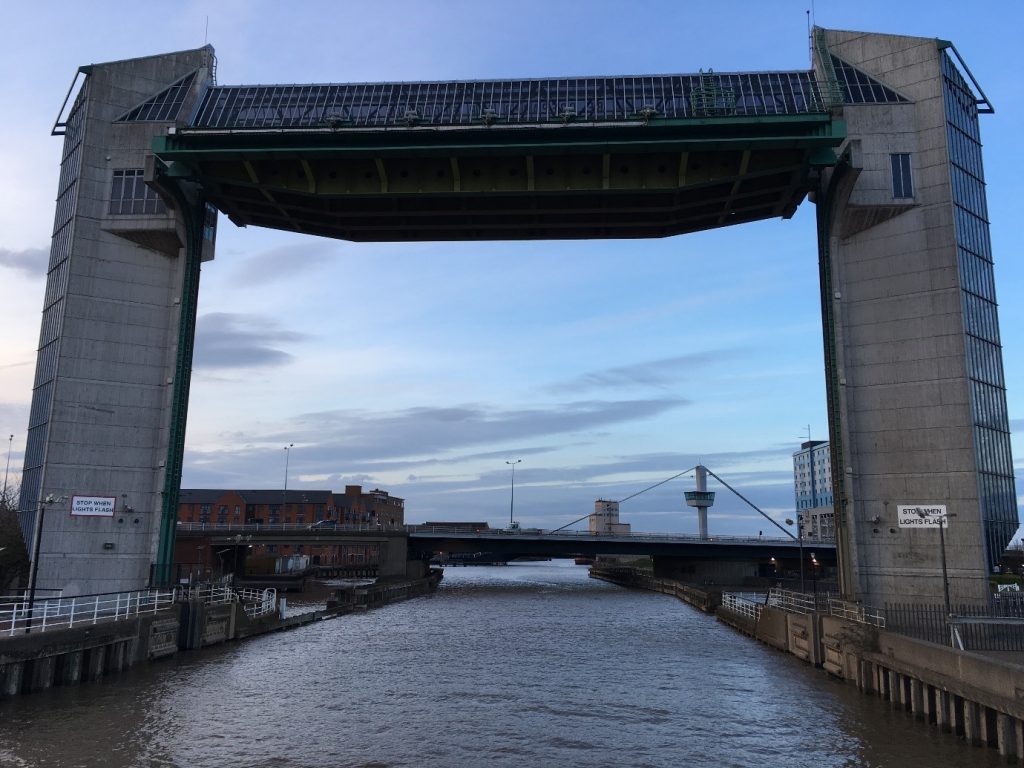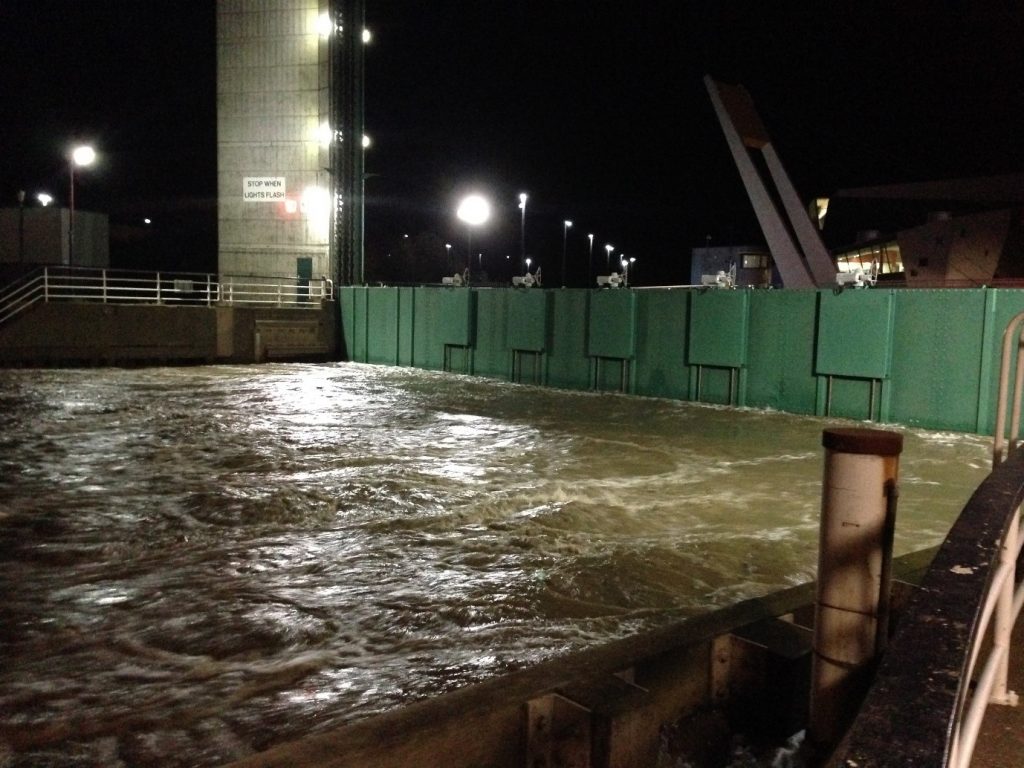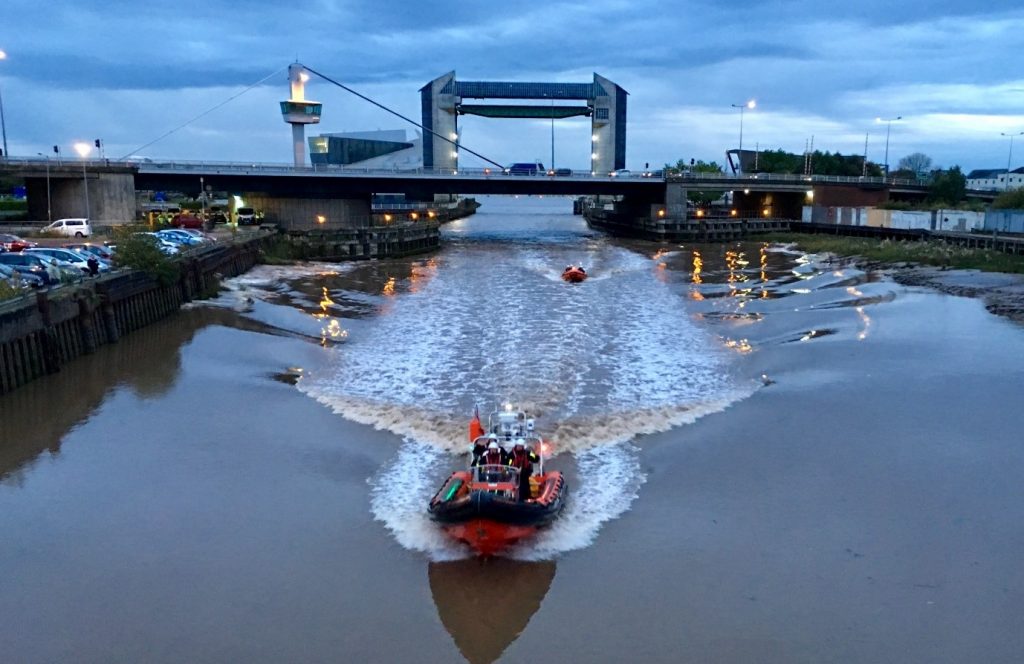Dr Stuart McLelland, Deputy Director, Energy and Environment Institute at the University of Hull
As you approach the west end of Humber Street (the new, fashionable place to live in Hull City Centre) near the Marina in the centre of Hull, you will catch glimpses of the Hull Tidal Surge Barrier. If you didn’t see it and it wasn’t there, those of us living and working in Hull would regularly get very wet, or worse…
Before the River Hull Tidal Surge Barrier was constructed, Hull City Centre often experienced flooding from very high Spring tides and tidal surge events. This is an inevitable consequence of building a city on land that is either part of a floodplain or reclaimed from the sea.
The term ‘reclaimed’, which is often used for land at coastal margins, may not quite live up to expectations that water has been permanently excluded. Before the barrier, high tides often flooded the basements of buildings in the Old Town area of Hull and many businesses and homes with cellars had to protect themselves from water damage. Some legal firms in the City Centre even built “flood proof” storage in their cellars. Over the centuries, Hull’s residents have lived with and adapted to this threat.
That was until the “Great Flood” of 1953 demonstrated the risk people were facing. Across Europe an exceptional tidal surge in the North Sea on Saturday, 31 January 1953 caused extensive damage with sea walls being breached in 1,200 places around the UK, 307 people being killed and 30,000 people evacuated from their homes across the country. This showed the potential devastation that might result from tidal extremes.
In 1969, another tidal surge inundated Hull City Centre. This galvanised action to protect the city from such devastating events. But, the River Hull is a navigable river and it first required parliamentary legislation to enable a barrage to be built that would not adversely affect navigation.
The Tidal Surge Barrier was completed in 1980 with foundations of 20m into the soft boulder clay underlying the city and a horizontal support of 34 m (the longest rolled steel ever made at that time by the British Steel Corporation!). Without doubt, it is an engineering feat and the structure today frames the confluence of the River Hull with the Humber.

The Hull Tidal Barrage from the footbridge near The Deep. Photo credit: Stuart McLelland
As if by magic, when a high tide event is predicted, the 212 tonne steel gate is lowered into the Hull, thus preventing water from the Humber entering the River Hull valley. This reduces the risk of potential damage for every house, business and industry in Hull.
When the barrier is down, water from the River Hull cannot flow out into the Humber. Fortunately, the flow in the Hull is small compared to the normal tidal inflows and the channel of the River Hull has the capacity to store the water that is being drained from the land behind the tidal surge barrier. This does mean that if a high tide or surge tide is predicted, then the barrier has to be lowered at the preceding low tide to ensure the biggest capacity is available.
When the barrier was first built it was usually lowered once per year. Nowadays, it can be lowered as frequently as once per month. This shows how the risk that the city faces from water on its doorstep has increased.
The barrier’s contribution to the city’s resilience was tested most recently during the tidal surge event of 2013. During this event, there was some flooding of the city as water breached flood defences in the Victoria Dock area and near Albert Dock. But the tidal surge barrier was impregnable, even when the waters came close!

2013 Tidal Surge at the River Hull Barrier. Photo kindly provided by Tom Coulthard
More recently, the Tidal Surge Barrier has also been used cleverly to reduce the risk of flooding from the River Hull. Normally when floods come down the River Hull, the water levels are further increased when the high tide flows upriver – as far as Tickton, near Beverley. When a river flood comes, the high tide limits space available for floodwaters, increasing the chance of flooding in the River Hull. In February 2021, the barrier was closed at low tide, to keep tidal waters out of the River Hull and allow flood water to fill the river channel without the additional pressure of water from the high tides. This reduced the flood levels and protected properties and land far upstream from the City Centre.
The tidal surge barrier is an impressive structure and an elegant engineering achievement to help the City and wider region live with the water that surrounds us. It’s certainly worth a visit!

The River Hull Tidal Barrage, Myton Gate Bridge and Humber Rescue Boat at the Open Bridges event during the City of Culture 2017. Photo credit: Stuart McLelland
The University of Hull’s Energy and Environment Institute is pioneering an MSc in Flood Risk Management. This innovative programme builds on the Institute’s expertise around the drivers and impacts of flood hazards to help students develop an understanding of new approaches to flood risk management and equip them for a career in the expanding flood risk sector. Hull is the ideal place to study flood risk management – the Humber region is pioneering the development of resilient communities through internationally recognised initiatives like ‘Living With Water‘, which has helped Hull become one of the Rockefeller Foundation’s five global cities that demonstrate future water resilience. As well as the Tidal Surge Barrier, students also have access to innovative schemes like ‘Slowing the Flow’ in Pickering and urban water basins protecting the city of Hull.
